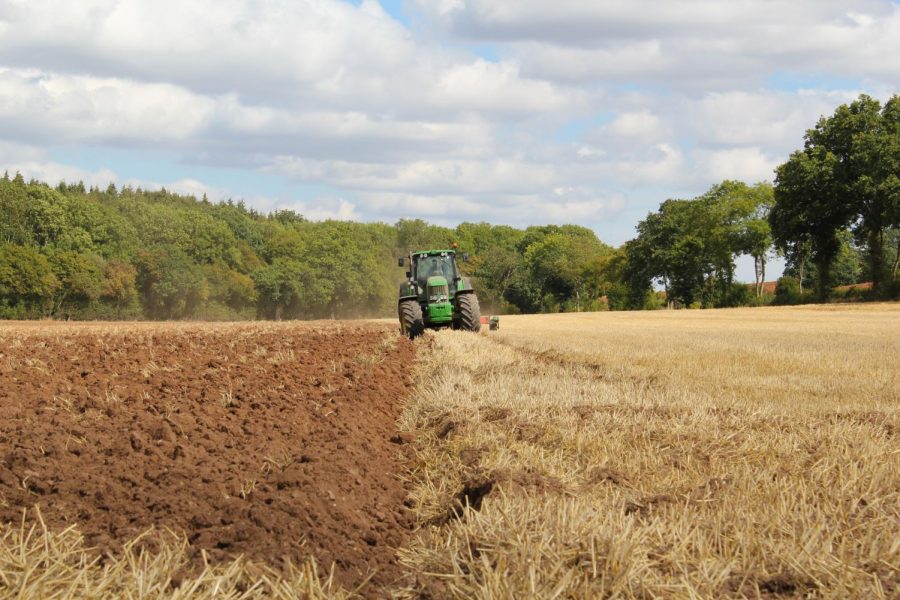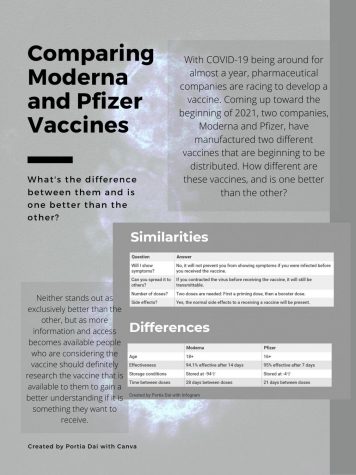The Truth Behind Genetic Modification
Delving into the arguments for and against GMOs.
Humans have been altering foods to their liking ever since the Prehistoric Era. Crops have been cross-bred with other plant species to create a more desirable product to satisfy ever-evolving tastes and desires. The culture of alteration changed forever when scientists Cohen and Boyer were the first to successfully genetically engineer an organism in 1973. Since their official discovery of GMOs–the world has been using this technology in crops, animals, vaccinations, etc.; adopting this science into common health and dietary patterns. This new development, however, has brought immense controversy as many feel unsettled by, or even detest, this inauthentic way of life. But how exactly do GMOs affect the environment and the human population?
Overall, genetically modified organisms positively affect the human population and the environment. This scientific breakthrough created many opportunities for the advancement in biotechnology. Similar to GMOs, vaccines are made by picking specific genes from the DNA strand of the virus. Vaccines help prepare the immune system to fight against certain diseases by offering “a preview of a potential infection.” Diseases, such as Hepatitis B, the Zika virus, and Ebola, could have eradicated the world had it not been for the necessary speed and efficiency of this molecular biology.
As the population increases and natural resources dwindle, finding other ways to cultivate food in order to sustain the world—in the case of crop extinction—becomes vital. The larger demand for resources to nourish the growing population of the world has allowed scientists to develop enriched foods. Enriched products vary from adding calcium to milk or vitamin E to rice. According to National Center for Biotechnology Information, the impact of cheap, nutrient-rich foods is so great that “developing countries are rapidly accepting the technology with the hope of alleviating hunger and poverty in larger numbers.”
GMOs were also indirectly created to help out farmers. Growing crops naturally made farmers’ crops more susceptible to various crop diseases and infestations. Crop infestations and diseases could possibly wipe out entire plant species—decreasing the farmers’ profits. However, GMF, or genetically modified foods, were created to reduce costs and improve crop yields and to eliminate the need for heavy applications of expensive fertilizer. Natural cross-breeding between plant species is very unpredictable. Instead of wasting their money and resources, farmers could use genetic engineering, which provides more precise modifications. Farmers can use this technology to grow more physically appealing crops and sell them in larger quantities without stripping the soil of its nutrients, reducing the amount of resources used during the process.
Unfortunately, there are some negative outcomes of GMOs that many argue outweigh its advantages. Toxicity is claimed to be “a huge issue surrounding chemical pesticides and herbicides, used commonly with GMOs, in addition to the toxicity inherent to these plants…[and] to non-target organisms,” such as bees and butterflies (Glass). Although the contamination does occur, the plants were more likely to have been “pollinated by insects, birds or wind, [the] pollen [moving] from a GMO plant to move to neighboring fields or into the wild” (Farm Aid). GMOs were created to decrease the need for pesticides and herbicides because the absorption of the harmful chemicals into the Earth allowed harmful chemicals to kill plants that weren’t the initial target of the poison. Modified organisms were meant to do more good than harm and altogether have solved the problems they were designed to solve.
Even with its disadvantages, GMOs are mostly beneficial to humans and the environment. In order to lessen its negative impacts, initiatives should be demanded of the GM organizations and authorities, farmers, and the general public. Large organizations that are tasked with monitoring GM food should update their curriculum with the new restrictions of the GMO production to ensure that newly developed GM foods are safe for consumption and the environment. GMO farmers need to take more precautions when planting their crops so that their crops won’t mix with other plant species or non-GMO plants. Additionally, those with the credentials to discuss GMOs should invest more time in spreading the truth to the public. This is still the beginning of this type of technology, and—in the future—could really come in handy. And although the dangers of GM are more publicized and made mainstream, it is important to keep in mind the intentions of those who created and designed GMOs.








daniela | Jun 7, 2019 at 9:16 am
Thank you for writing this, it’s very informative! I like how you addressed both perspectives on this topic to create greater discussion. I usually don’t check for GMO labels (oop-) but I definitely will from now on so thank you hehe
Jenna Salhab | Jun 6, 2019 at 4:32 pm
Super informative! And very well written too!
Gabi Shapo | Jun 5, 2019 at 7:39 pm
Learned so much about the positive and negative impacts that GMOs have on humans! Thanks so much for publishing!
Yara Mohamed | Jun 5, 2019 at 5:44 pm
This article was very interesting and brought up points not normally discussed! The topic of GMOs are somewhat controversial but this article does a good job of discussing its benefits!
Nesya | Jun 5, 2019 at 4:32 pm
I think that this article was very interesting and well informed, and showed both view points of the controversy. In my family, we eat only organic products, which means when buying fruit, milk, etc. we check the labels and stickers to see if it’s non GMO.
lisa carlen | Jun 5, 2019 at 2:00 pm
this is very well written and informative! i didn’t know much about GMO but this was very interesting
Alexandra Dankyi | Jun 5, 2019 at 12:00 pm
this is so awesome, thank you for informing me about this topic! i didn’t know anything about this 🙂
omer | Jun 5, 2019 at 11:33 am
very nice piece! My first reaction is to oppose GMO food, because it is not “natural”. However, after reading your piece, I agree the benefits can overcome the potential hazards, given the right regulation and inspection.
omer | Jun 5, 2019 at 11:32 am
very nice piece! My first reaction is to oppose GMO food, because it is not “natural”. However, after reading your piece, I agree the benefits can overcome the potential hazards, given the right regulations and inspection.
Daniel Lim | Jun 5, 2019 at 11:26 am
Great article. You can definitely see the time and effort our into it. Looking forward to more future articles!
(do you have any more?)
Ellie | Jun 5, 2019 at 11:10 am
It’s really well written and I like the design of the website:D
Sophie mcneil | Jun 5, 2019 at 11:06 am
I think this article is very informing and well written. I like the way you worded this. Keep up the good work!